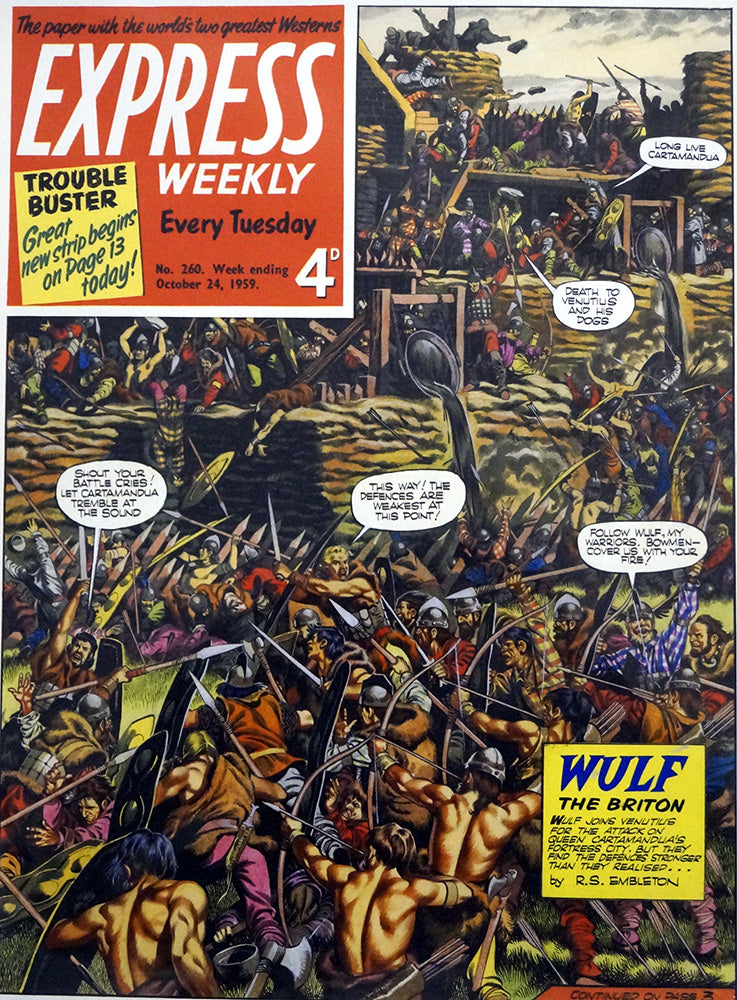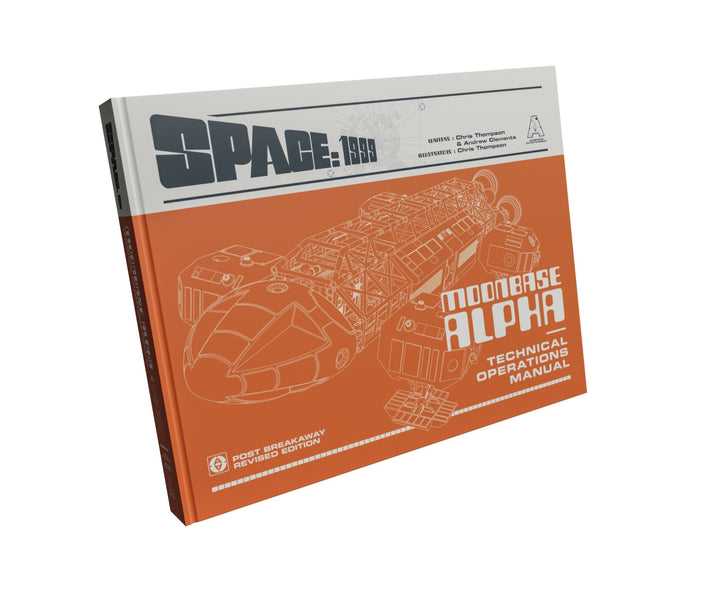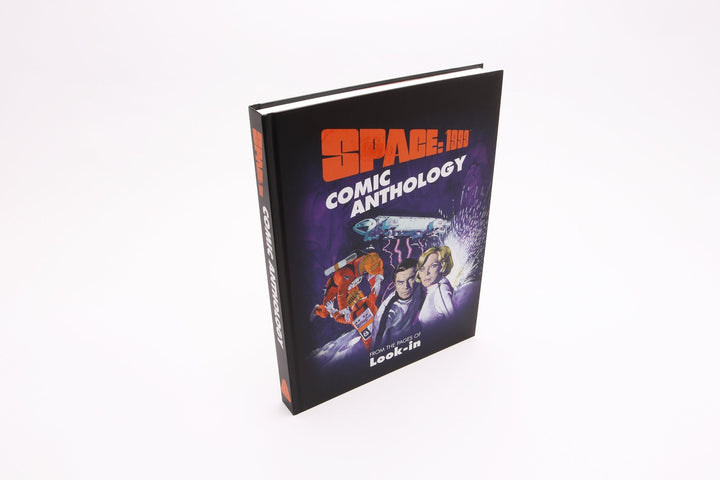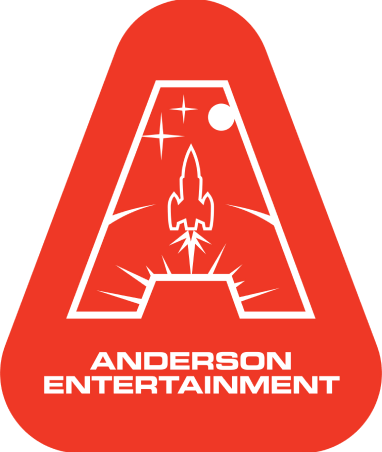21st Century Artists: Ron Embleton

2025 marks 60 years of TV Century 21! To mark the occasion, we're bringing you a series of artist biographies of many classic and obscure creative talents who drew the likes of Thunderbirds, Captain Scarlet, Stingray and more for the newspaper of the future.
We're diving into the story of Ron Embleton, whose extensive run on TV Century 21's Stingray strip was just one spectacular example of an immensely prolific career.
Embleton Emerges

Ronald Sydney Embleton was born on October 6th, 1930. He would prove to have one of the most far-reaching careers illustrating comics compared to other TV Century 21 artists prior to joining the comic. After several decades of producing comics, he would turn his attention to pursuing oil paintings, for which many of his works would become well-regarded, but his comic strip and character illustration work would remain in constant demand throughout his career.
Ron was educated at the South East Essex Technical College and School of Art and subsequently began his far-reaching career illustrating adventure comics early on. Ron was still in his teenage years when he began drawing comics in 1947 at a time when the immediate aftermath of the Second World War provoked a seismic shift in British comic strips, brought on by increased exposure from American comics. Embleton's bold, dominating figurework, characterised by fluid movement and a lavishly painterly style, would be a great fit for this flourishing period of reinvention for the British comic strip.

His formative work included producing work for the London-based publisher Scion, which was producing a variety of American-styled papers with such names as Big Indian, Big Jungle, Big Pirate and Big Tong. He wrote and drew across these titles, swiftly establishing a reliable name for himself as a spectacular artist with a blossoming photorealist style. During the late 1940s, he also illustrated Modern Fiction's detective comic Ray Regan.

Embleton's fledging comics career was briefly interrupted by his National Service, in which he served in south-east Asia during the Malayan Emergency. Returning to comics in the early 1950s saw his career swiftly resume with regular comic strip, character portraits and book cover work for a variety of publishers. Embleton expanded his talented reach across an eclectic mix of genres, from Westerns and detective fiction to comedies, historical adventures and science fiction. He contributed to TV Boardman's Buffalo Bill comic and Amalgamated Press' Cowboy Picture Library and Super Detective Library during the 1950s, which would have brought him into contact with a young Alan Fennell and Angus Allan, who wrote and edited AP's cowboy title. Other comics featuring Embleton's work throughout the 1950s and into the early 1960s included Micky Mouse Weekly, Playhouse, The Rover, and The Hotspur. Much of his interior strip work during this time was produced in black and white, an approach that would drastically evolve as the 1960s beckoned.
Commanding the Front Page

In 1957, Embleton took over the prestigious historical adventure strip Wulf the Briton, which commanded the front page of Express Weekly (later TV Express). Wulf the Briton was initially written by Jenny Butterworth and illustrated by Ruggero Giovannini, but Embleton eventually embraced writing, drawing, painting and even lettering this venture. He did so in beautifully full-colour style, emphasised by the comic's photogravure production values (which TV Century 21 would embrace to equally vivid effect). The strip's eventual expansion to a two-page colour spread in 1959 reflects Embleton's stature as one of the UK comic industry's leading talents by this time.
Wulf the Briton's status on the comic's front page was eventually diminished when it was replaced in 1960 by flying ace Biggles, also produced by Embleton. Other subsequent war-flavoured adventure strips that would command TV Express' front page included Battleground and Colonel Pinto. Embleton's fiercely rich detail and historical accuracy made these pages crackle with adventure.

The double-page centrespread fantasy adventure Wrath of the Gods would follow for Boys' World in 1963 and would foreshadow the format of his take on Stingray. Another historical adventure strip would emerge from Embleton during this time; Johnny Frog for Eagle, a Napoleonic spy adventure strip, produced in 1964. Alongside hugely productive work in boys' adventure strips, Embleton dipped his artistic toes into girls' comics, too. For Princess, Embleton adapted Captain Marryat's Children of the New Forest in 1963 and contributed strips to June Book and Girl's Crystal Annual.
Aquatic Adventure and Spectrum's Superman


Embleton was an obvious talent for Alan Fennell and art editor Dennis Hooper to poach when acquiring artists for TV Century 21 during the comic's embryonic production in 1964. A.P. Films' then latest Supermarionation TV production, Stingray, was surging onto television screens during this time, making it the obvious headline act to lead the comic to great success. While Frank Bellamy had been Fennell's initial choice to illustrate the Stingray strip, Embleton could hardly be classed as second-best.
Embleton's style was perfect for illuminating Stingray's exotic underwater world in comic strip form. His knack for action-driven page compositions and smoothly textured line art make for a visually sumptuous transplantation of Stingray from the small screen to the comic page. Escape from Aquatraz, The Weather Station Mystery, The Flying Fish Mystery and The Monster Weed are particular highlights, demonstrating his nimble yet asserting figurework and richly eclectic colours in fine style.

Embleton was Stingray's first resident artist, illustrating the first 57 issues for an unbroken run that lasted just over a year's worth of material. His brother, Gerry, and equally accomplished artist, filled in for him for The Medallion Mystery before Ron would return to illustrate The Monster Weed, his last Stingray illustration in TV Century 21. Gerry would illustrate a further handful of stories before Michael Strand became the strip's second main artist in late 1966. Embleton would later contribute to Lady Penelope that year, illustrating the last two The Man from U.N.C.L.E. storylines between issues 40 and 52 before that strip's replacement by The Girl from U.N.C.L.E.
Another Gerry Anderson character appearing in TV Century 21 would be closely associated with Embleton, despite the artist having an altogether brief tenure with that character. Embleton applied his captivating centrespreads to the comic's launch of Captain Scarlet, illustrating the first three storylines throughout late 1967. The first two were centrespreads, but as 1968 dawned, TV Century 21 underwent its usual yearly reformatting with the arrival of each new year. The Captain Scarlet strip, having only just begun, underwent a drastic reinvention. It dropped the centrespread format and now consisted of four pages per issue - a colour front page, two interior black and white single pages and a final full colour single page.
Historical Highlights

Embleton's career as a painter/illustrator flourished throughout his later career. His painted illustrations used for Captain Scarlet's end credits are fondly remembered, depicting the indestructible man in a selection of vividly aggressive scenarios. His illustrative work would continue with extensive contributions to educational magazines Look and Learn and World of Wonder. Despite his desire to pursue oil paintings, the demand for further comic strip work continued to occupy much of his professional output. He produced more full-colour comic work for Penthouse in the 1970s, this time of a far more erotic nature than the likes of Stingray or Wulf the Briton!
The ever-prolific Ron continued to be in demand for illustrative work, producing numerous Charles Dickens character portraits for This England magazine during the late 1970s and early 1980s. His passions and talents for producing historical work led to a lengthily association with Newcastle-based publisher Frank Graham from the early 1970s onwards. Embleton illustrated a variety of paintings, coloured plates and black-and-white drawings for many of the publisher's historical publications, ranging from such topics as Hadrian's Wall to the Farne Islands and the Romans.
![Ron Embleton Captain Scarlet End Title Art Prints [Numbered Limited Edition] - The Gerry Anderson Store](https://cdn.shopify.com/s/files/1/0475/4549/products/ron-embleton-captain-scarlet-end-title-art-prints-numbered-limited-edition-635684.jpg?v=1689018465)
Ron Embleton died of a heart attack at his home in Bournemouth in February 1988, aged 57. His death was noted by national newspapers, lauding his extensive work as a master visual craftsman for capturing historical details with such accuracy, as well as celebrating his contributions to children's comics. His membership of the Royal Institute of Oil Painters reflects the recognition he had away from his comic strip work as a compelling painter. Becoming a painter was, in fact, a lifelong ambition that he held onto. The Unseen Work of Ron Embleton exhibition, held in 2019, celebrated this lesser-known avenue of his extensive and beloved career.

Ron's contributions to the worlds of Gerry Anderson remain significant highlights of a breath-takingly versatile career that can't easily be pigeonholed into any one genre or medium.
Sign up to the Anderson Entertainment newsletter to receive all the latest Gerry Anderson news, exclusive releases and more transmitted direct to your inbox!




![Thunderbirds Comic Anthology Volume One [HARDCOVER] - The Gerry Anderson Store](http://gerryanderson.com/cdn/shop/files/thunderbirds-comic-anthology-volume-one-hardcover-8030771.jpg?v=1751089031&width=720)
![All Sections Alpha: The Making of Space: 1999 [HARDCOVER] - The Gerry Anderson Store](http://gerryanderson.com/cdn/shop/files/all-sections-alpha-the-making-of-space-1999-hardcover-7498116.png?v=1757766647&width=720)

![Stingray Comic Anthology Volume Two – Battle Lines [HARDCOVER] - The Gerry Anderson Store](http://gerryanderson.com/cdn/shop/files/stingray-comic-anthology-volume-two-battle-lines-hardcover-107681.jpg?v=1738856151&width=720)
![Stingray W.A.S.P. Technical Operations Manual Standard Edition [HARDCOVER] - The Gerry Anderson Store](http://gerryanderson.com/cdn/shop/files/stingray-wasp-technical-operations-manual-standard-edition-hardcover-112278.jpg?v=1749664163&width=720)
![Stingray WASP Technical Operations Manual Special Limited Edition [HARDCOVER BOOK] - The Gerry Anderson Store](http://gerryanderson.com/cdn/shop/files/stingray-wasp-technical-operations-manual-special-limited-edition-hardcover-book-991914.jpg?v=1749657538&width=720)
![Stingray: The Titanican Stratagem – Signed Limited Edition [HARDCOVER NOVEL] - The Gerry Anderson Store](http://gerryanderson.com/cdn/shop/files/stingray-the-titanican-stratagem-signed-limited-edition-hardcover-novel-129251.jpg?v=1740558711&width=720)








2 comments
His intensity of colour is unmatched in illustration.Superb!
I knew him best for Oh Wicked Wanda and Sweet Chastity. This man could draw and paint anything, a true master. Died too young.